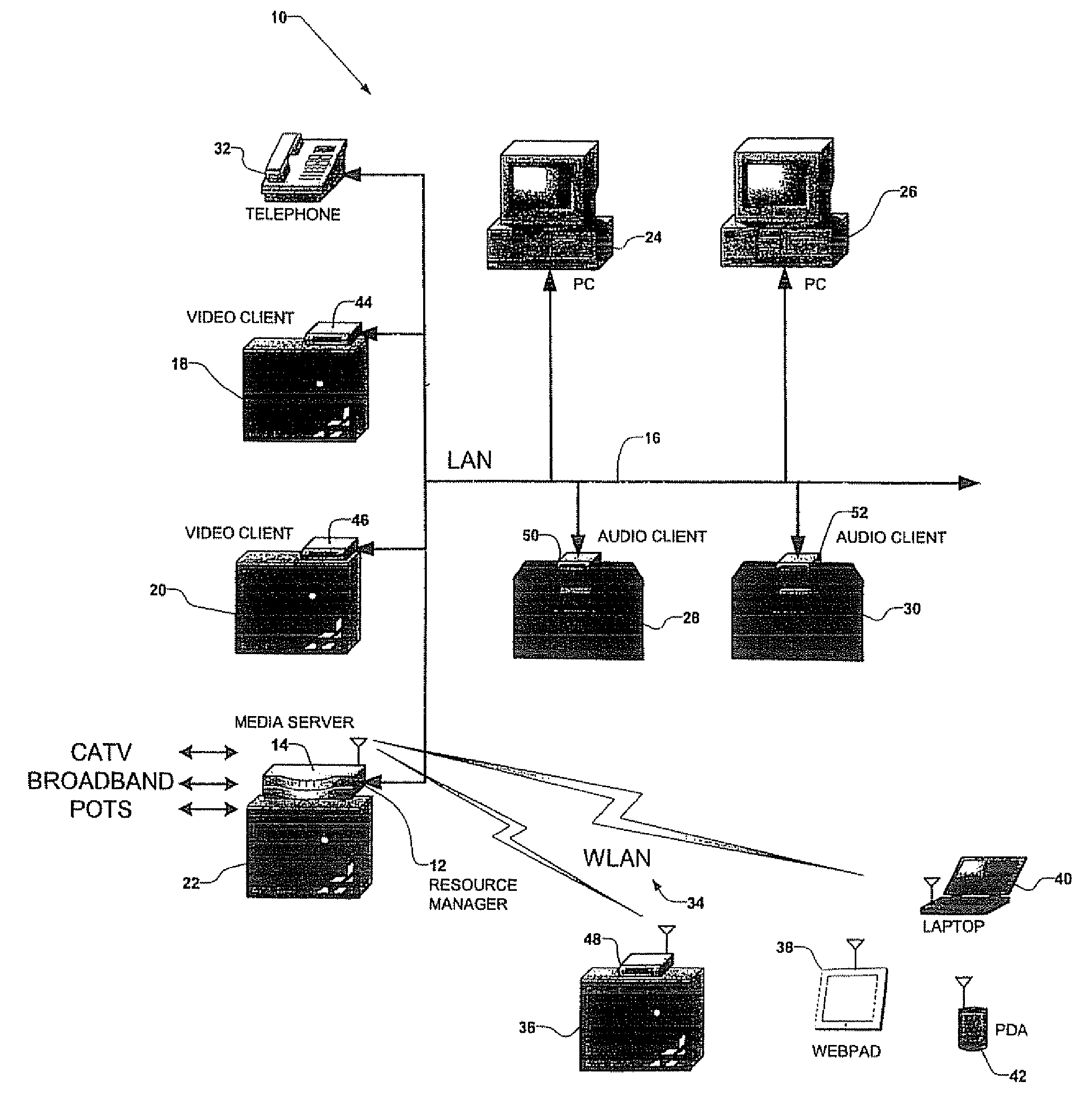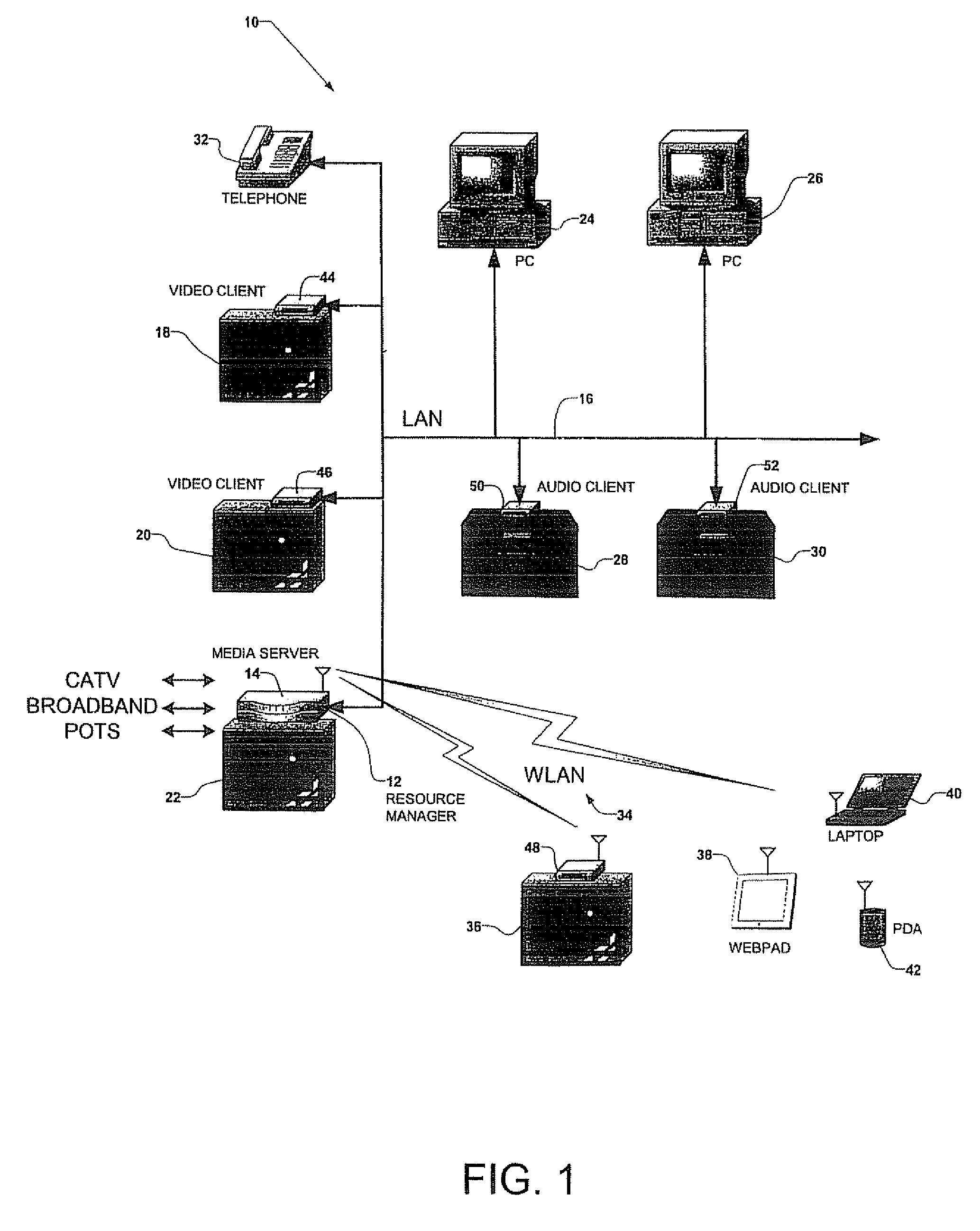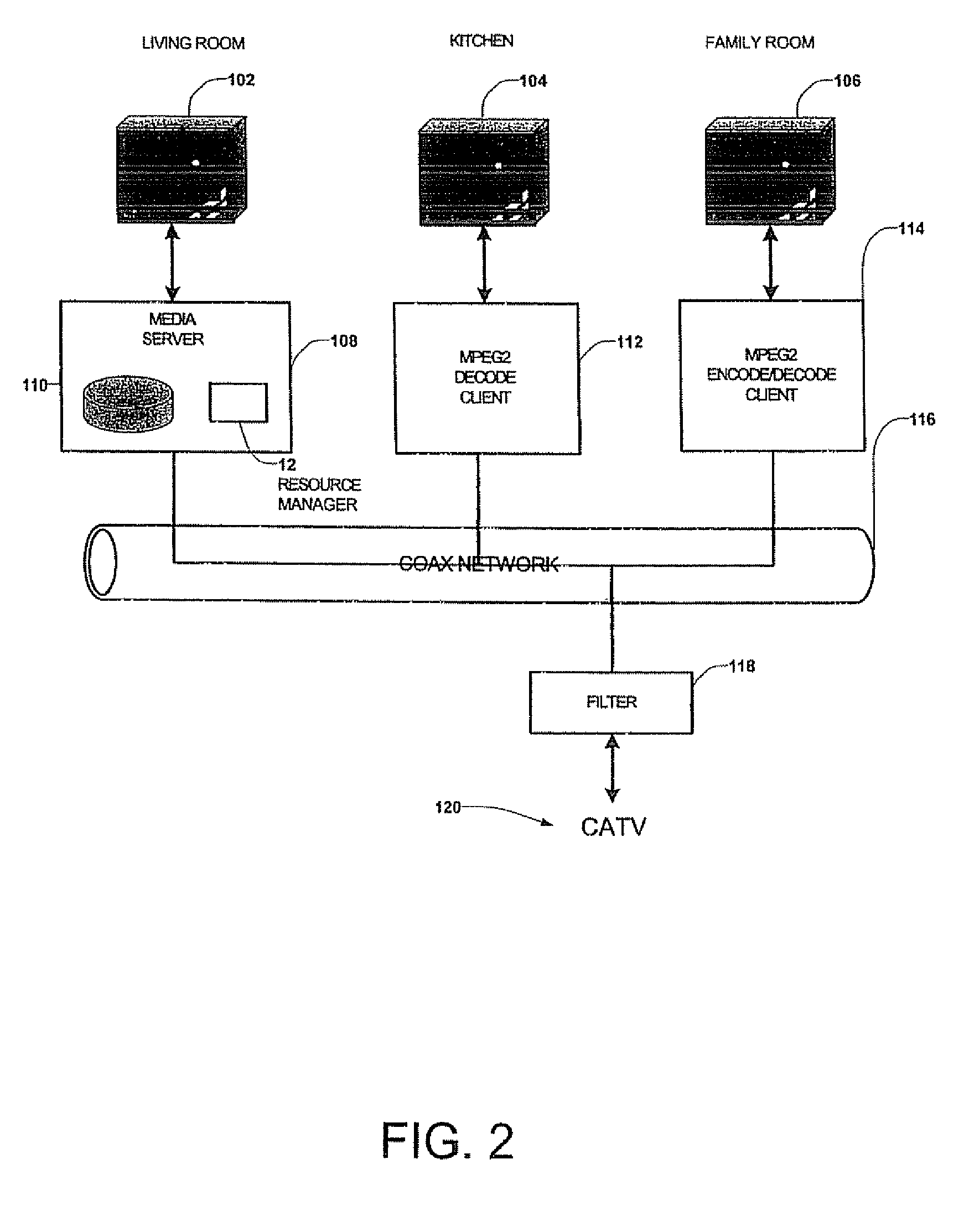Centralized Resource Manager With Power Switching System
a resource manager and power switching technology, applied in the field of home networks, can solve the problems of deadlock timing situations, limited havi methodology in several ways, and efficient allocation and management of resources of various devices
- Summary
- Abstract
- Description
- Claims
- Application Information
AI Technical Summary
Benefits of technology
Problems solved by technology
Method used
Image
Examples
Embodiment Construction
[0052] Overview:
[0053] The present invention is directed to a centralized resource manager (CRM) that can be linked to a plurality of networked devices in a distributed network. One such network could be a home network having digital entertainment, computing, and communication devices. Examples of network services include audio and video processing (erg., recording audio and / or video content for storage or real-time use), distributing audio and / or video content for real-time presentation to a user (e.g., listening to a stereo system or viewing and listening via a television set), and data and graphics processing (e.g., creation, modification, display, storage, or rendering of data or graphics by using a PC or other devices or applications). Illustrative descriptions of distributed home networks are set forth below.
[0054] In accordance with known network practice, each of the devices or functional systems in the network can have resources that can be used by the functional system i...
PUM
 Login to View More
Login to View More Abstract
Description
Claims
Application Information
 Login to View More
Login to View More - R&D
- Intellectual Property
- Life Sciences
- Materials
- Tech Scout
- Unparalleled Data Quality
- Higher Quality Content
- 60% Fewer Hallucinations
Browse by: Latest US Patents, China's latest patents, Technical Efficacy Thesaurus, Application Domain, Technology Topic, Popular Technical Reports.
© 2025 PatSnap. All rights reserved.Legal|Privacy policy|Modern Slavery Act Transparency Statement|Sitemap|About US| Contact US: help@patsnap.com



